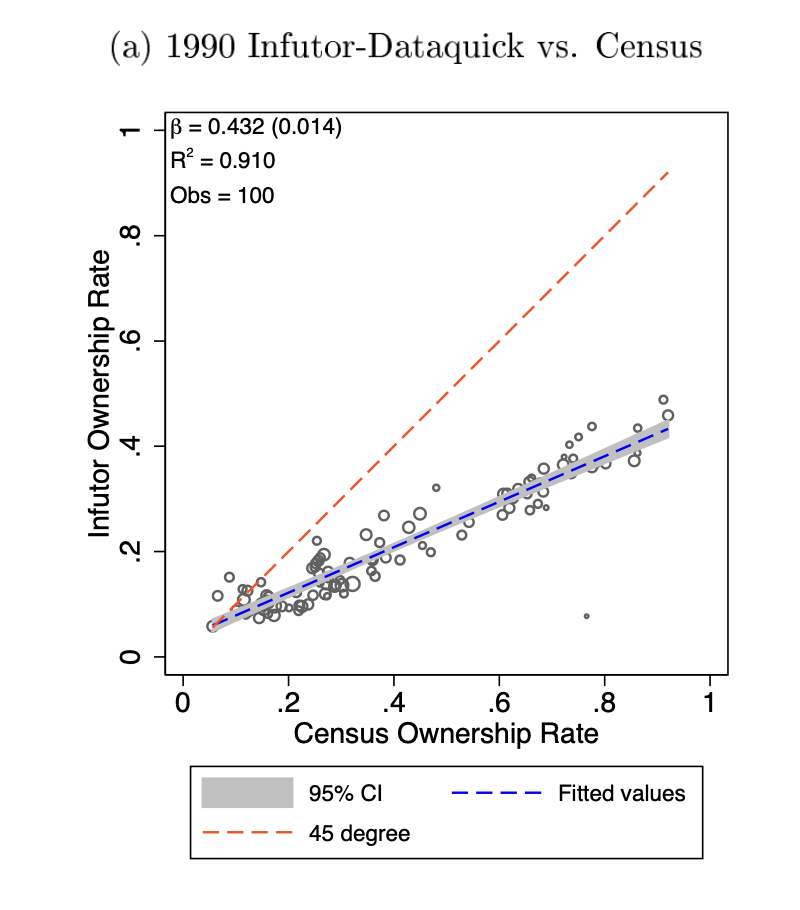Diamond et al. (2019)
The economics of Housing & Homelessness
A Class Presentation of
City Council
Legislature
Govenor
The paper's motivation
What do you think about the way the paper motivates itself?
Certain states are considering repealing laws which limit a cities ability to pass/expand rent control
Paragraph 1:
There is a lot of economic research that highlights the negative consequences of rent control
Paragraph 2:
Maybe the fact that tenants cannot insure themselves against future rent increases is one reason we should consider rent control?
Paragraph 3:
#1
Rent Control Model
Rent Control
What Additional Insight Can We Gain
- We find that between five and ten years after the law change, the beneficiaries of rent control are, on average, 3.5 percentage points more likely to still remain at their 1994 address relative to the control group
#2
Understanding the Magnitude
Understanding how the Long-term Effects Differ from Short-term
- Rent Control Increase Gentrification
- Landlords’ substitution toward owner-occupied and newly constructed rental housing not only lowered the supply of rental housing in the city, but also shifted the city’s housing supply toward less affordable types of housing
Applied Econometrics
Spillover Effects
- The authors highlight that the two papers most similar to their work explore the impact that rent control has on never-controlled units
Why is the author emphasizing the manner in which the 1994 law was passed?
We exploit an unexpected 1994 law change that suddenly rent-controlled a subset of San Francisco buildings and their tenants, based on the year each building was built
Built Before 1979
Yes
No
Building with 5 or more units
Yes
No
Rent Control
(1979)
Rent Control
(1994)
Treated
Control
I am surprised that they include units up until 1990 in the control group




















San Francisco
Pre-1994




















San Francisco
Post-1994
Reduction in Supply of Housing
Decontrol studies focus on housing that remains under rent control
Identification
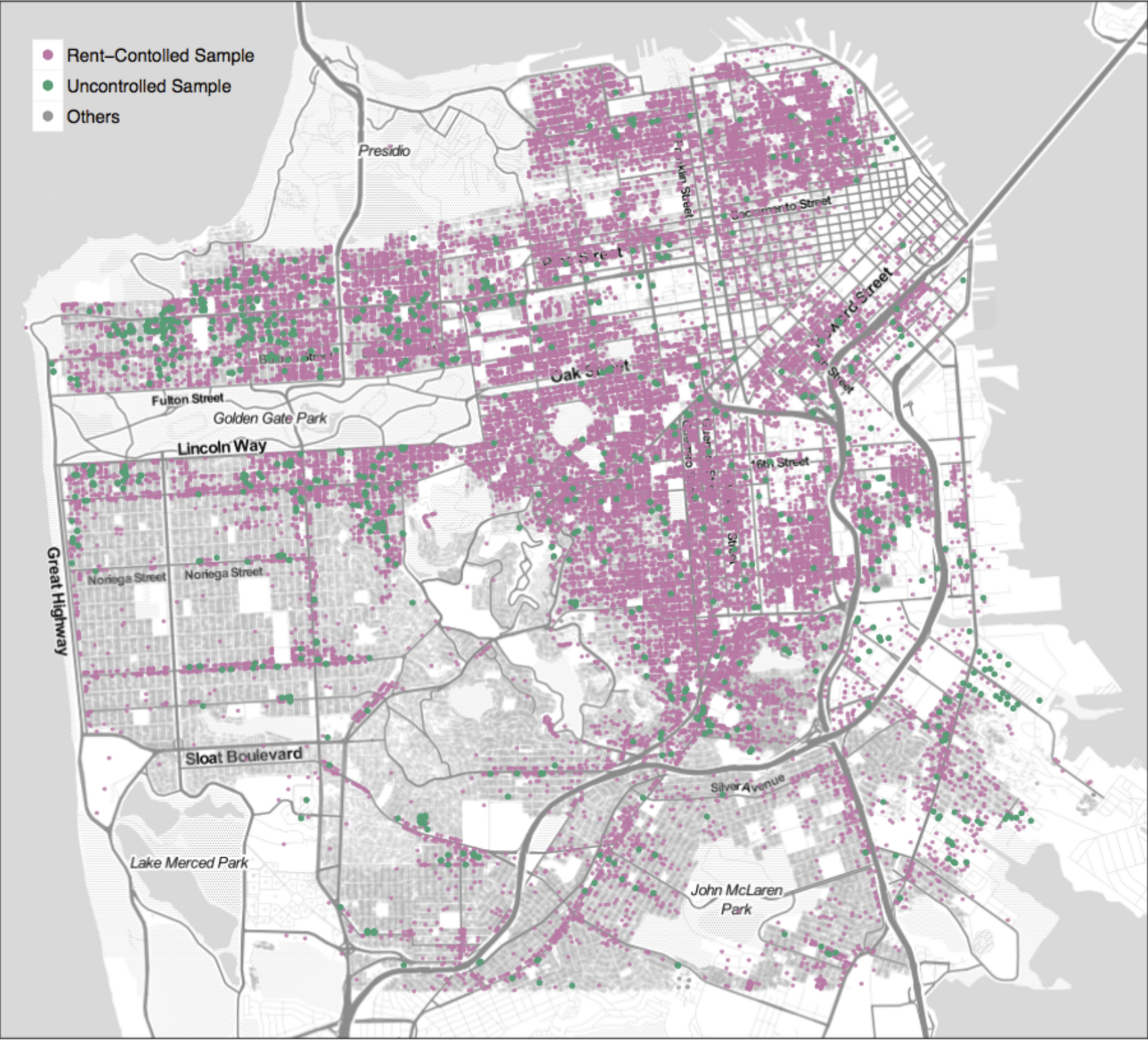
Treatment is assigned in a single time period at the individual level
Intuitively, it feels wrong to control for individual level fixed effects
Local variation of treatment
Controls
Zip Code
Length of Residency
Year of Move-in
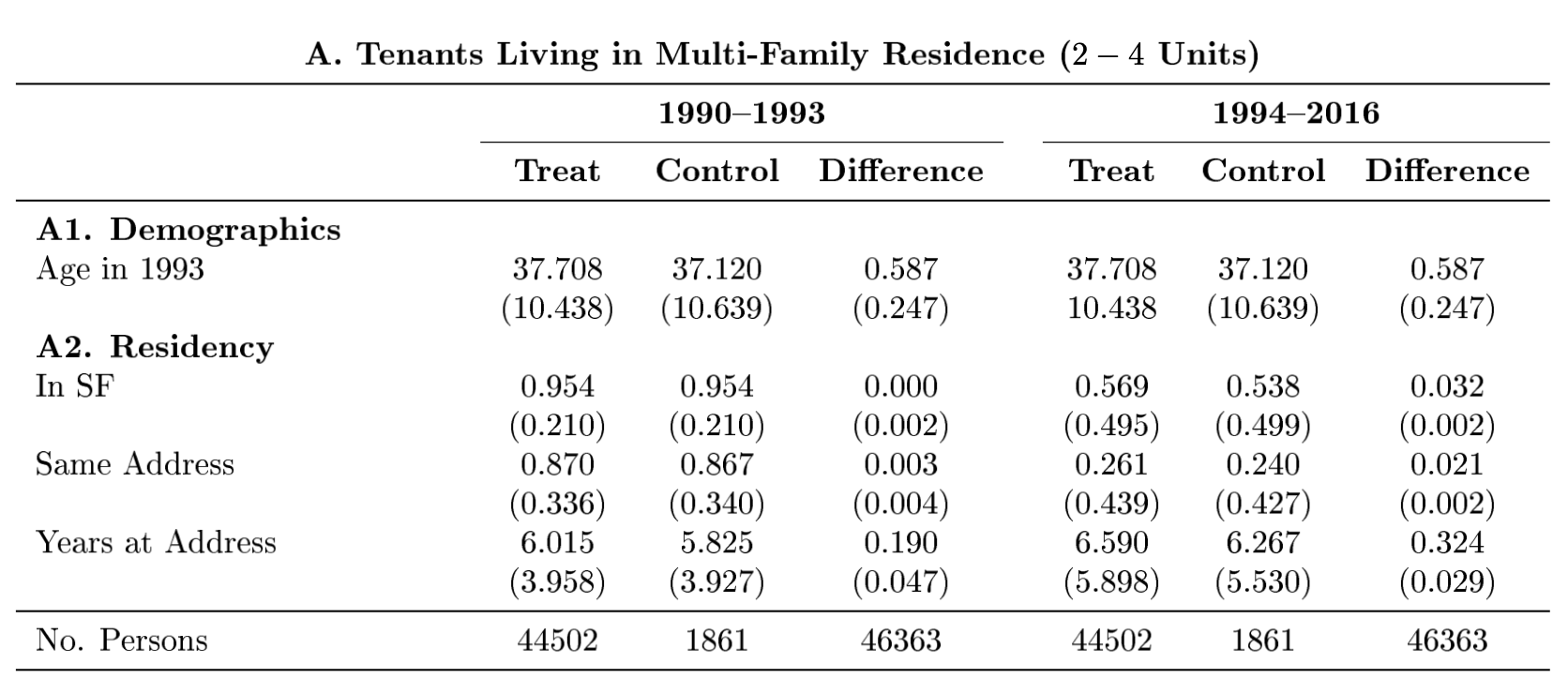
Check for Balance
Pre-treatment Differences
Not sure why they include this
This is likely why they keep buildings built up to 1990
Estimated Effects
Neighborhood Quality
Treatment Effects
Regression Model
Individual Level Fixed Effects
Indicator for Moved
Rent Control Indicator
Date of Move in by Time Fixed Effects
Tenancy by Year Fixed Effects
Applied Econometrics
Nonparametric Identification
You should in practice be able to run a separate model for each treatment effect
Conditional on Zip Code, Year of Move-in, and Length of Tenancy, Rent Control is as good as randomly assigned
Pause for Concern?
Zip Code is quite large, right?
How different are these buildings in the treated and control groups? What are the monthly rents? What is the income of the tenants?
This is not difference-in-difference
"As further evidence of random assignment, we see no pre-trends leading up to time of treatment."
Pre-trends aren't meaningful in this context because the outcomes are of a different nature
(Magnitude of effects drop with census tract level fixed effects)
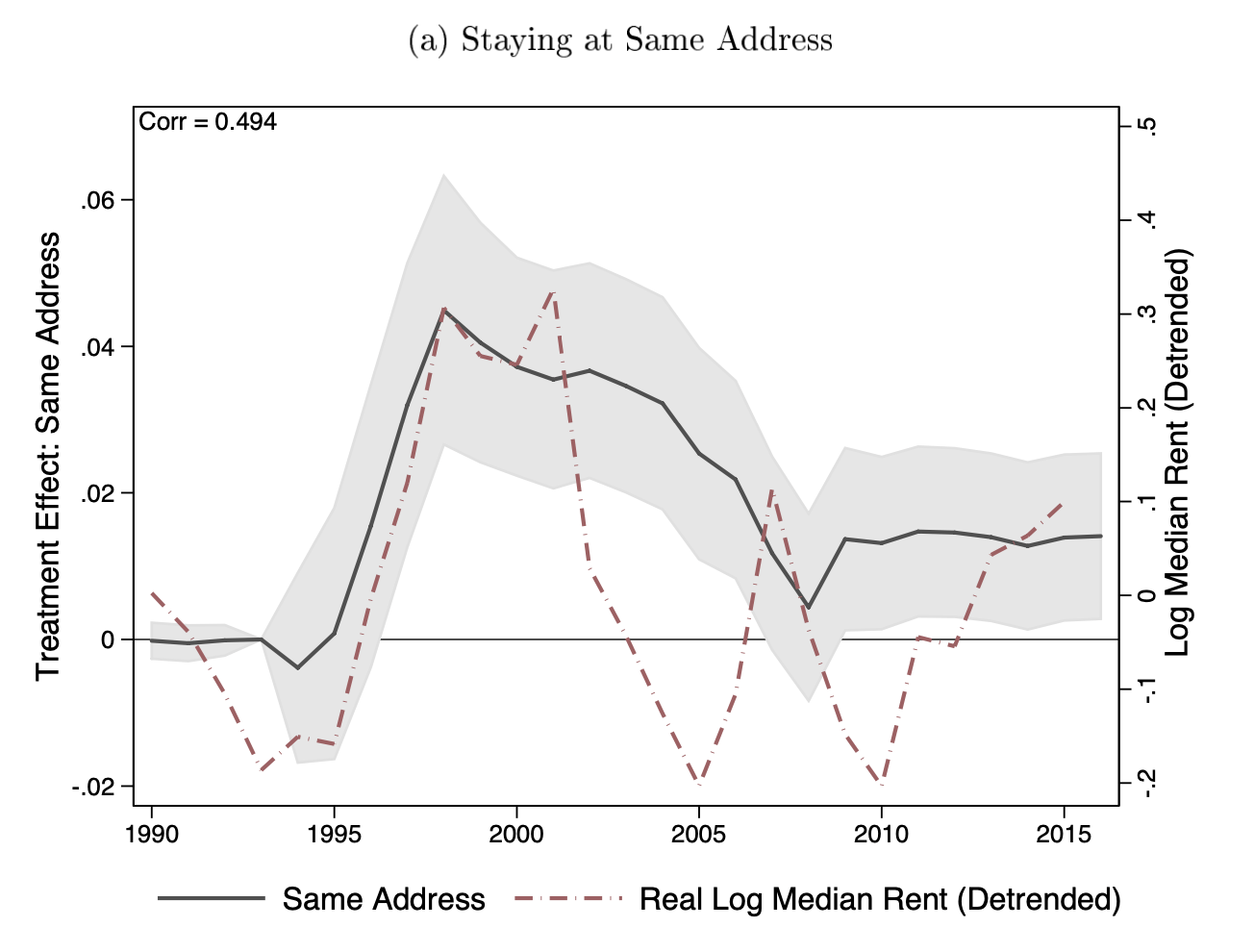
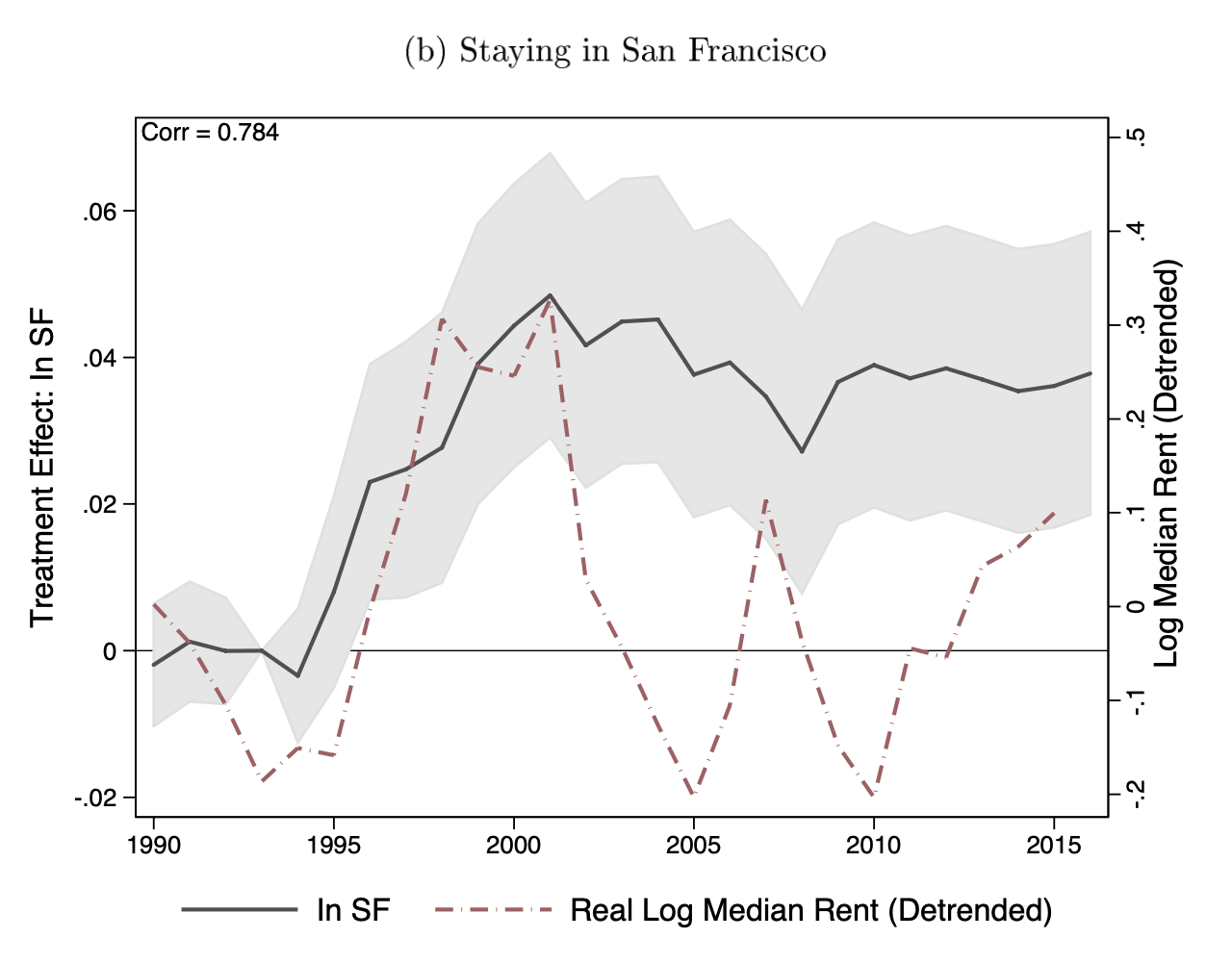
Results
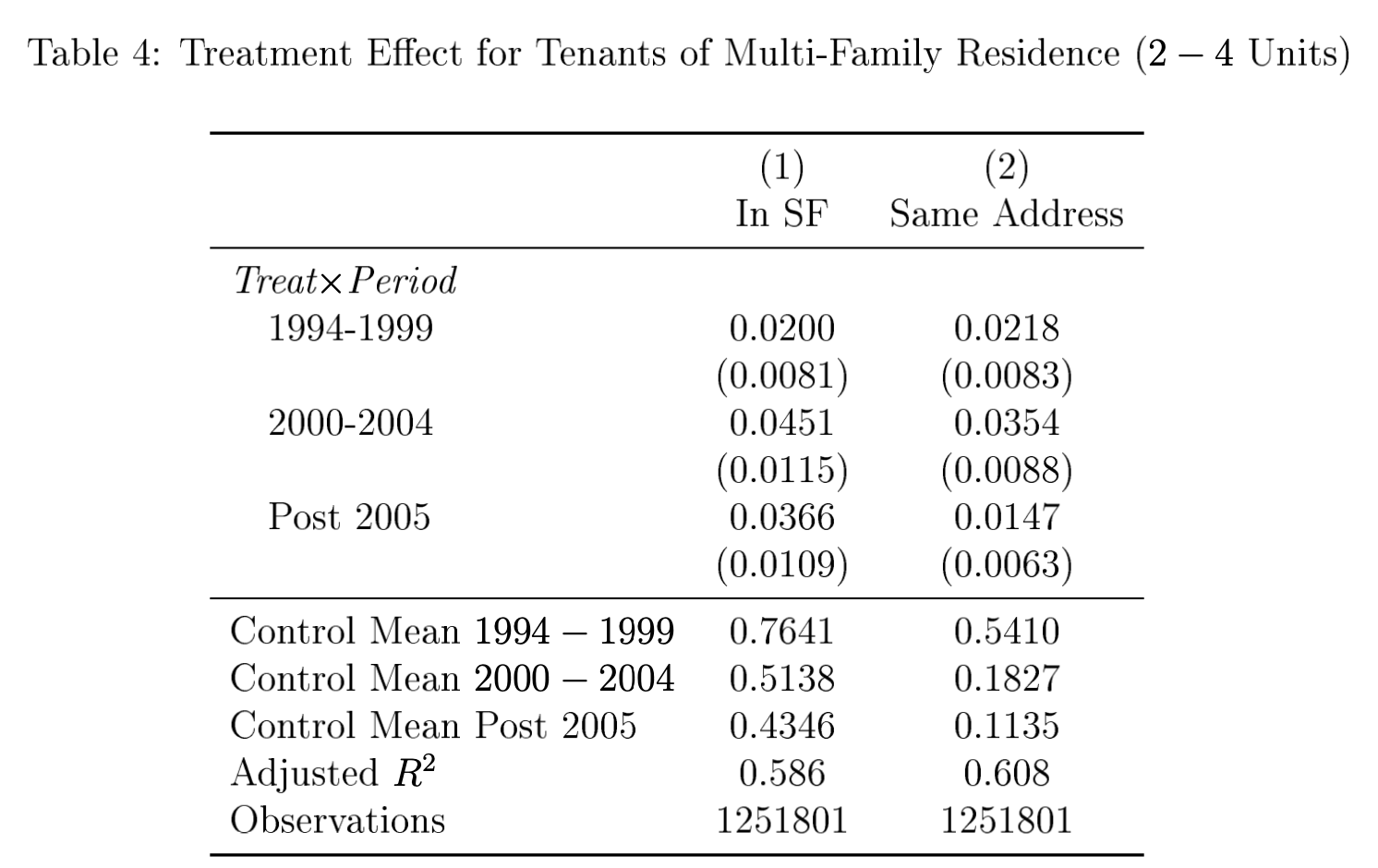
Results
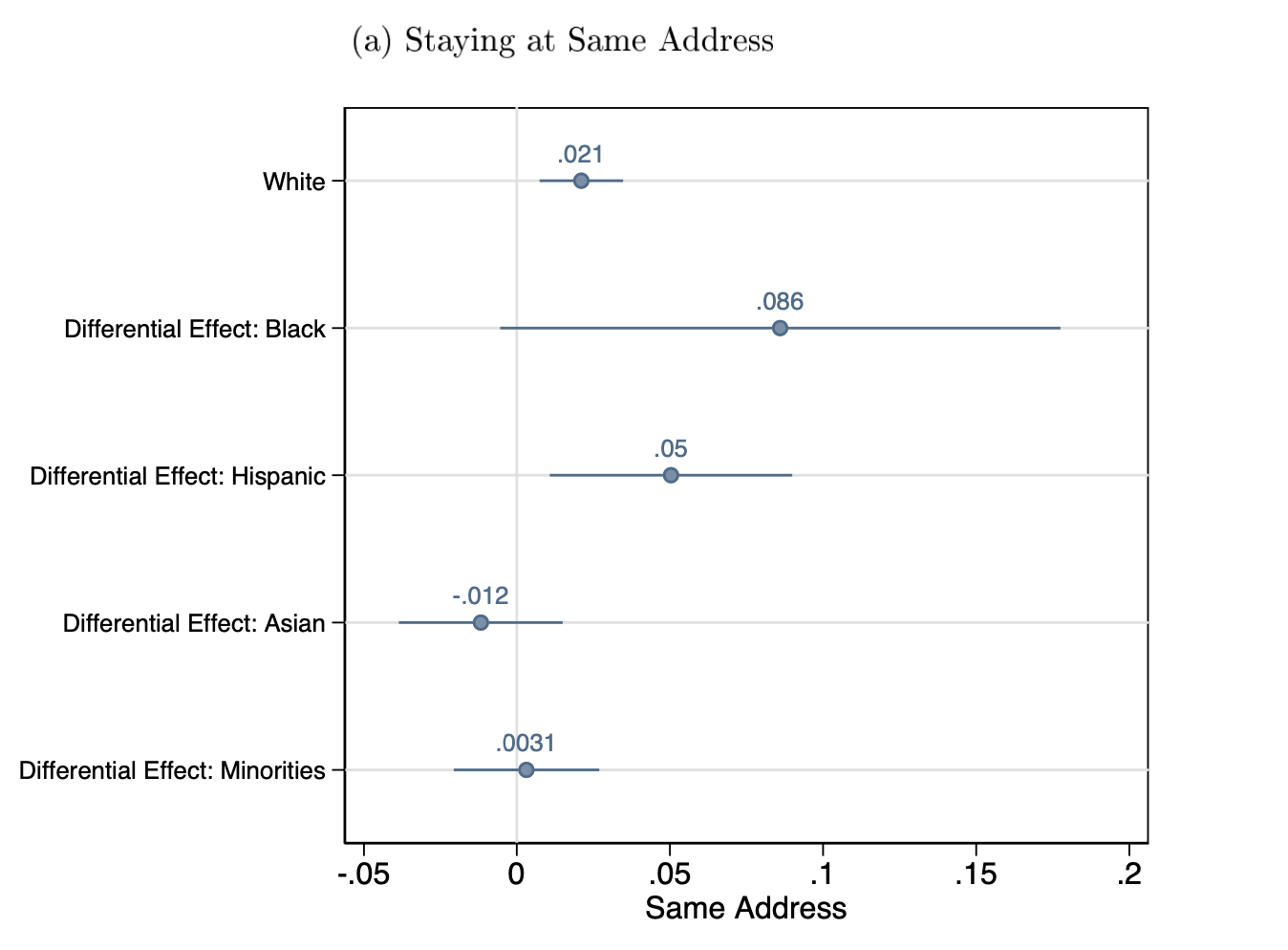
Heterogeneity
"The results above strongly suggest that while tenants value and take advantage of the protections offered by rent control, landlords actively take steps to reduce the burdens of the law, especially in those areas in which it would be most profitable to do."
Over the next few slides, do you agree with the following take-away?
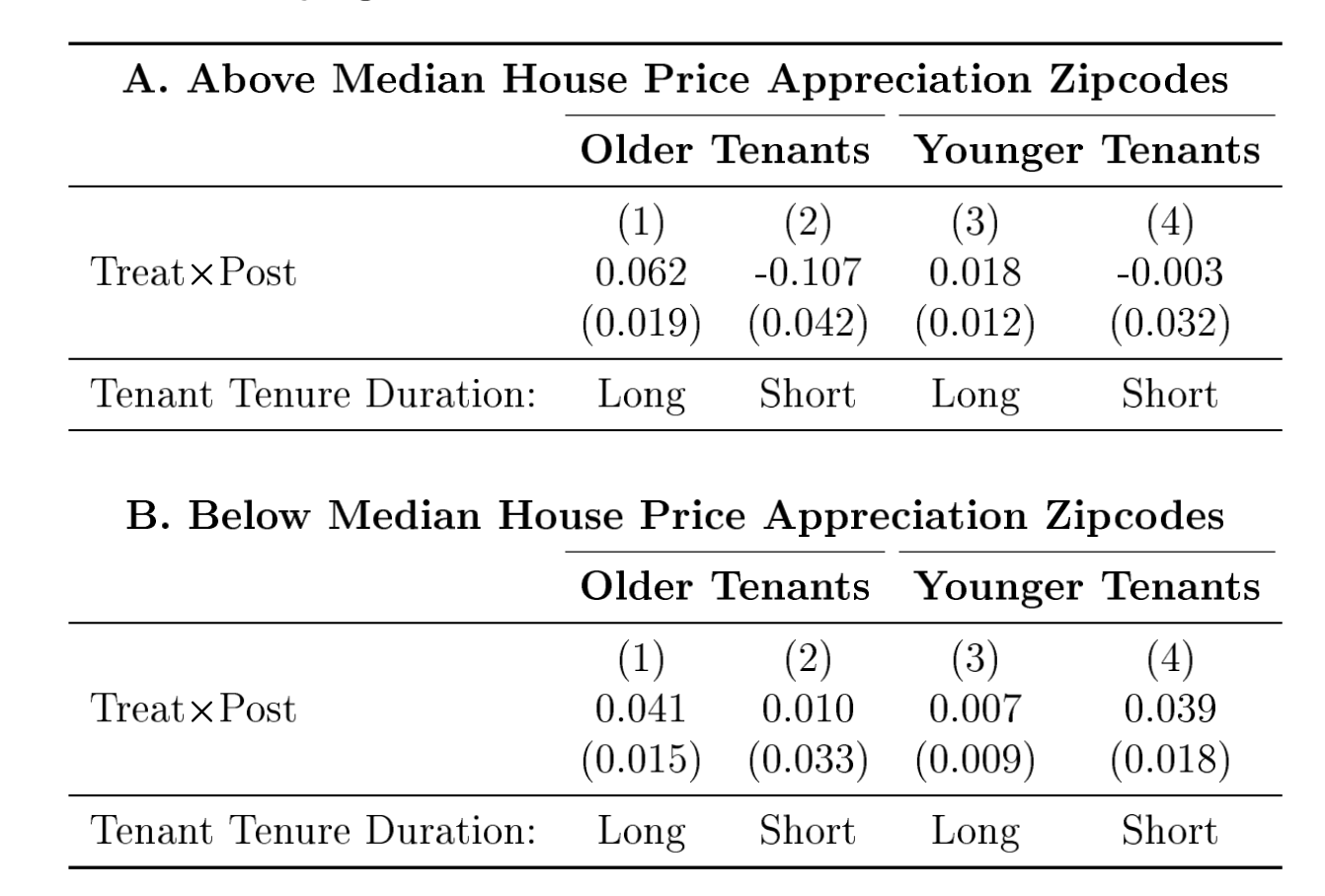
Heterogeneity
"This result suggests that landlords actively try to remove tenants in those areas where rent control affords the most benefits, i.e. high price appreciation areas."
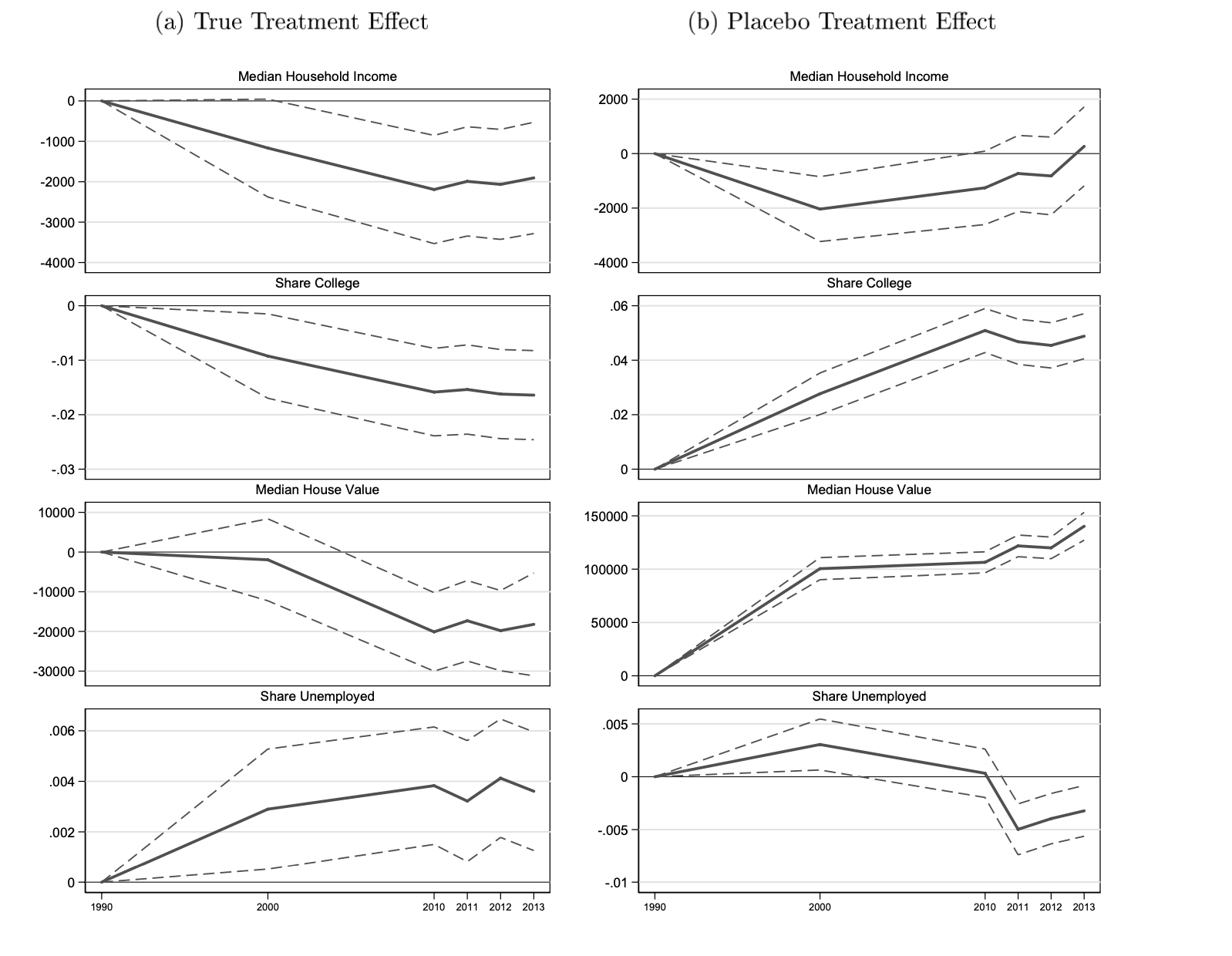
The regressions don't control for census level attributes
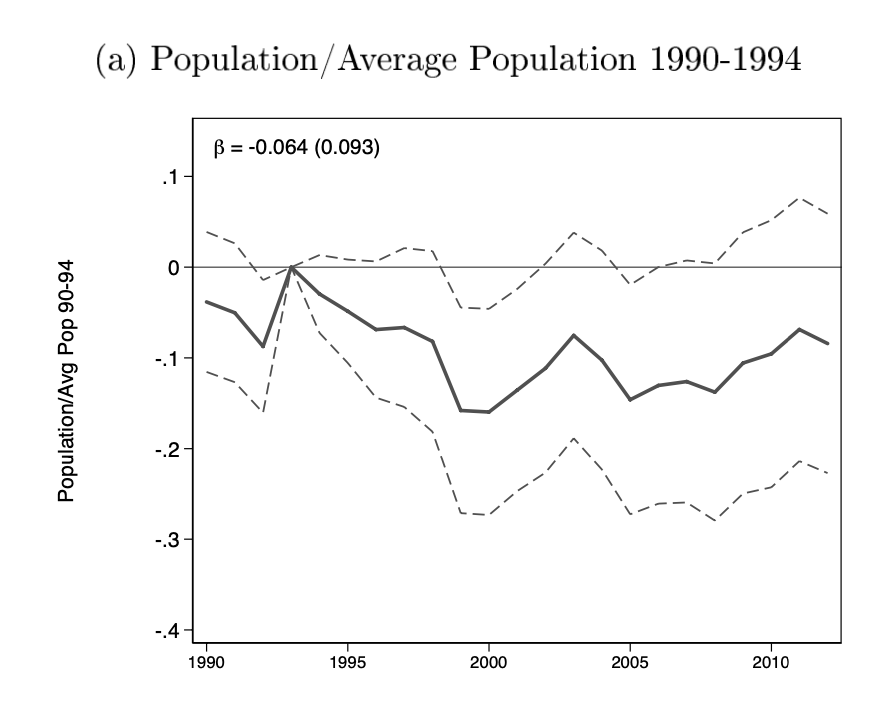
Parcel and Landlord Effects
This effect could also be explained by less overcrowding over time
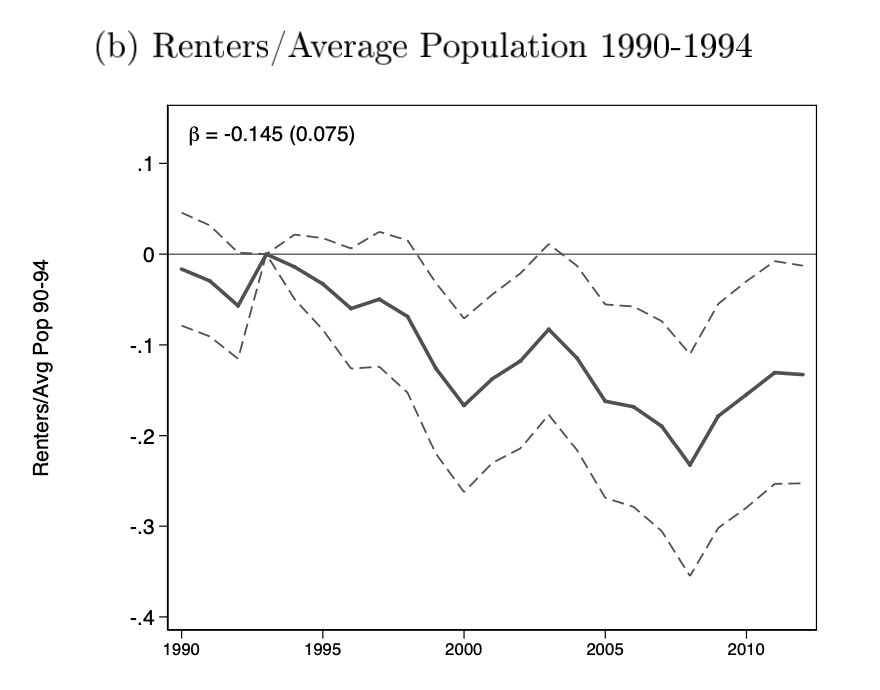
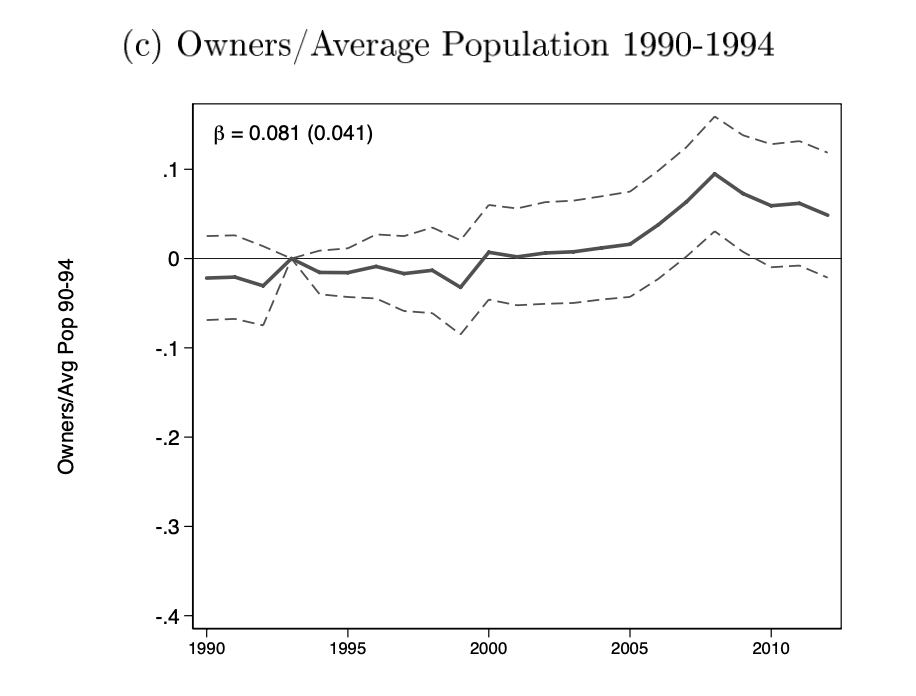
Why is this effect delayed?
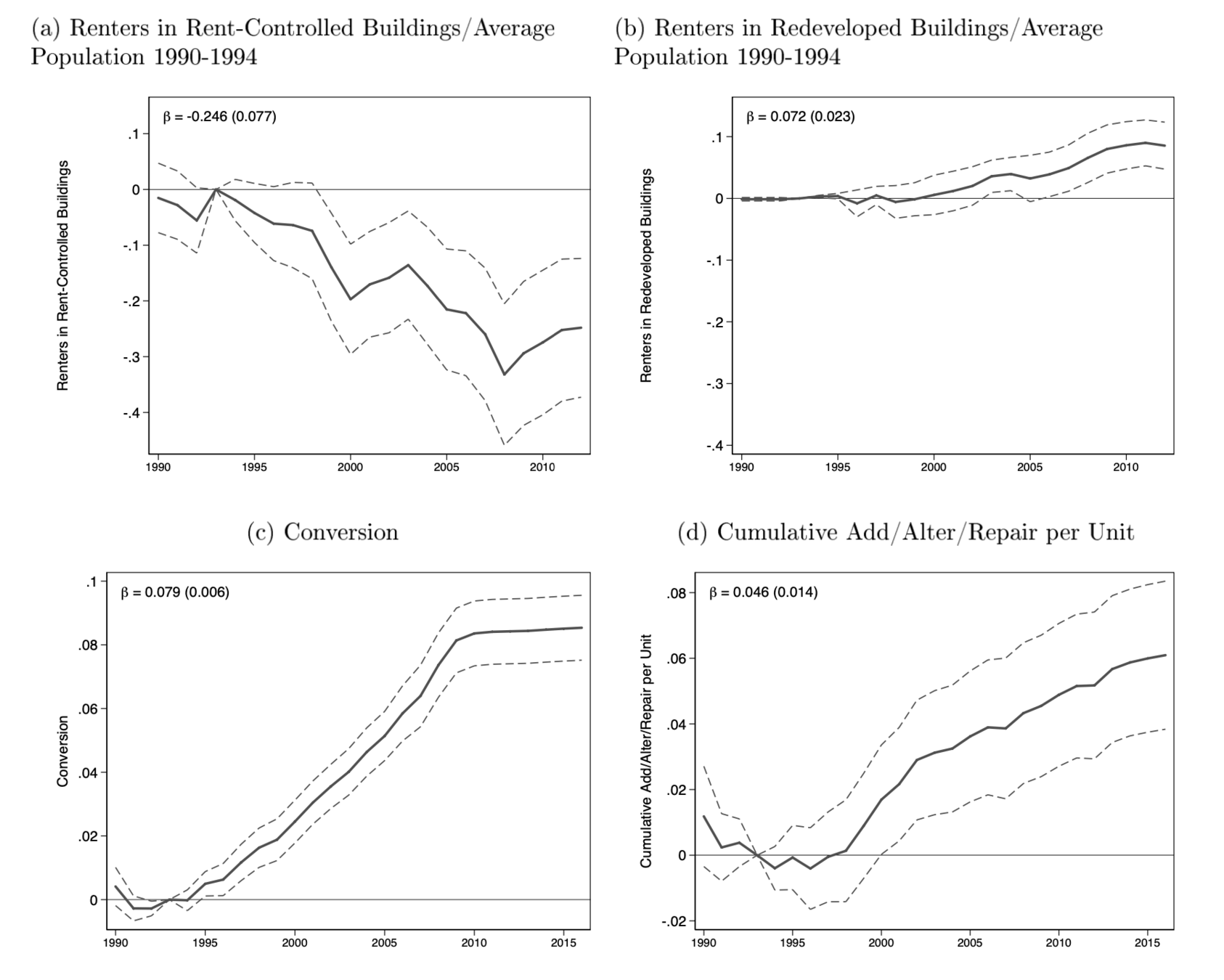
Why would you convert new buildings?
Do these results conflict with the tenant level regressions?
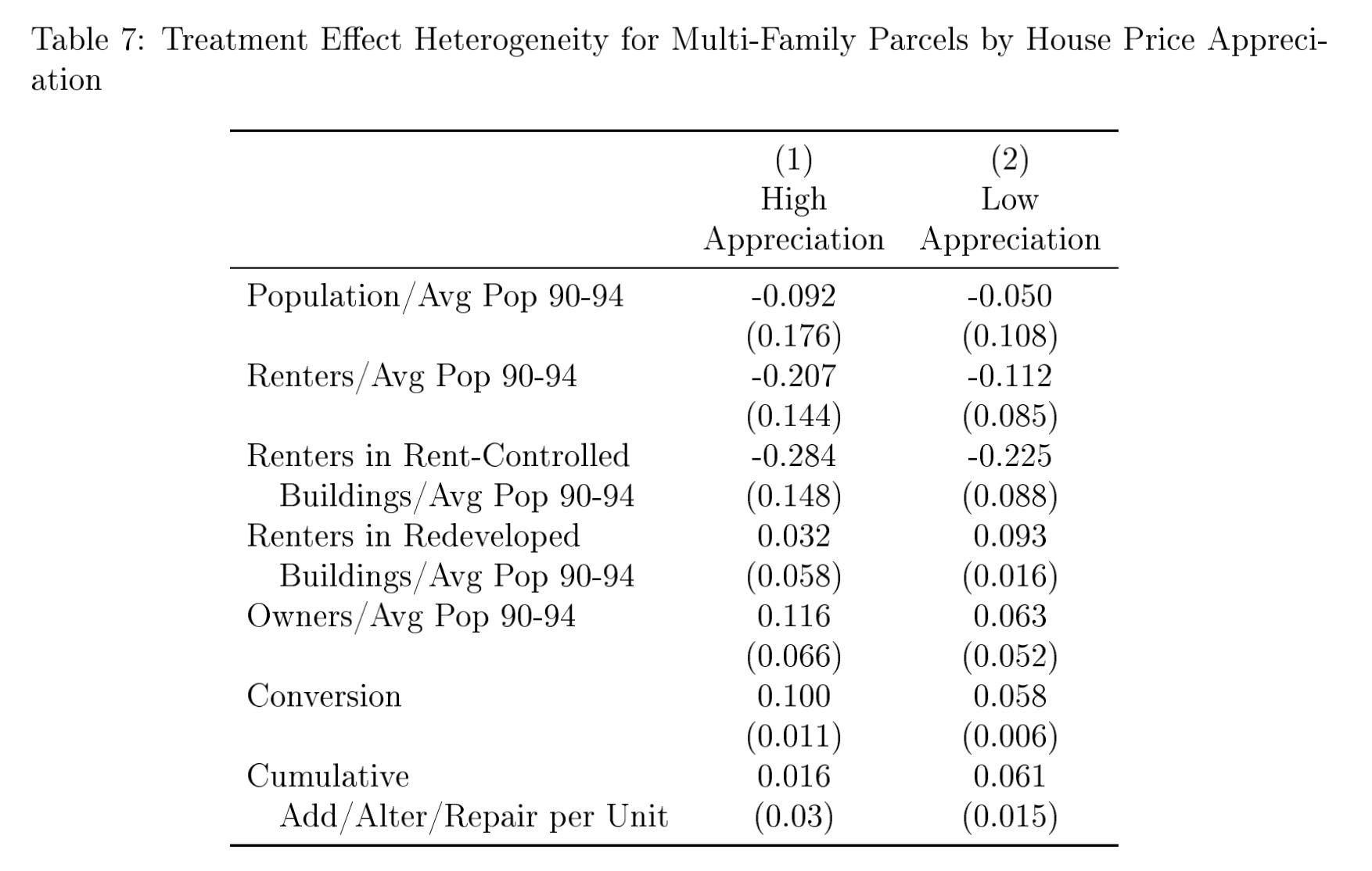
It's surprising that a paper on rent control doesn't make use of rent data and therefore doesn't show that the rent control measure is binding
Zip Codes seem too broad a control in this setting. Census tracts are available. I'm not sure why the authors don't include census tract fixed effects in their main specification (they show in one regression that census fixed effects make the treatment effect smaller)
The time-frame seems to broad
Treated
Control
Overview
Motivation
Bad
Misallocation of housing
Negative Spillover Effects
Physical Neglect
Good
Local insurance against price increase
In the medium to long term the beneficiaries of rent control are between 10 and 20% more likely to remain at their 1994 address
Effects of rent control on tenants are stronger for
Minorities
Older Households
Longer tenancies
Effects of rent control on tenants are negative for
Areas with rising housing prices
Results
What catches your attention?
Impacted landlords reduced the supply of available rental housing by 15%
What's missing from these results?
Migration Chains
"In addition, the conversion of existing rental properties to higher-end, owner-occupied condominium housing ultimately led to a housing stock increasingly directed towards higher income individuals. In this way, rent control contributed to the gentrification of San Francisco, contrary to the stated policy goal. Rent control appears to have increased income inequality in the city by both limiting displacement of minorities and attracting higher income residents.
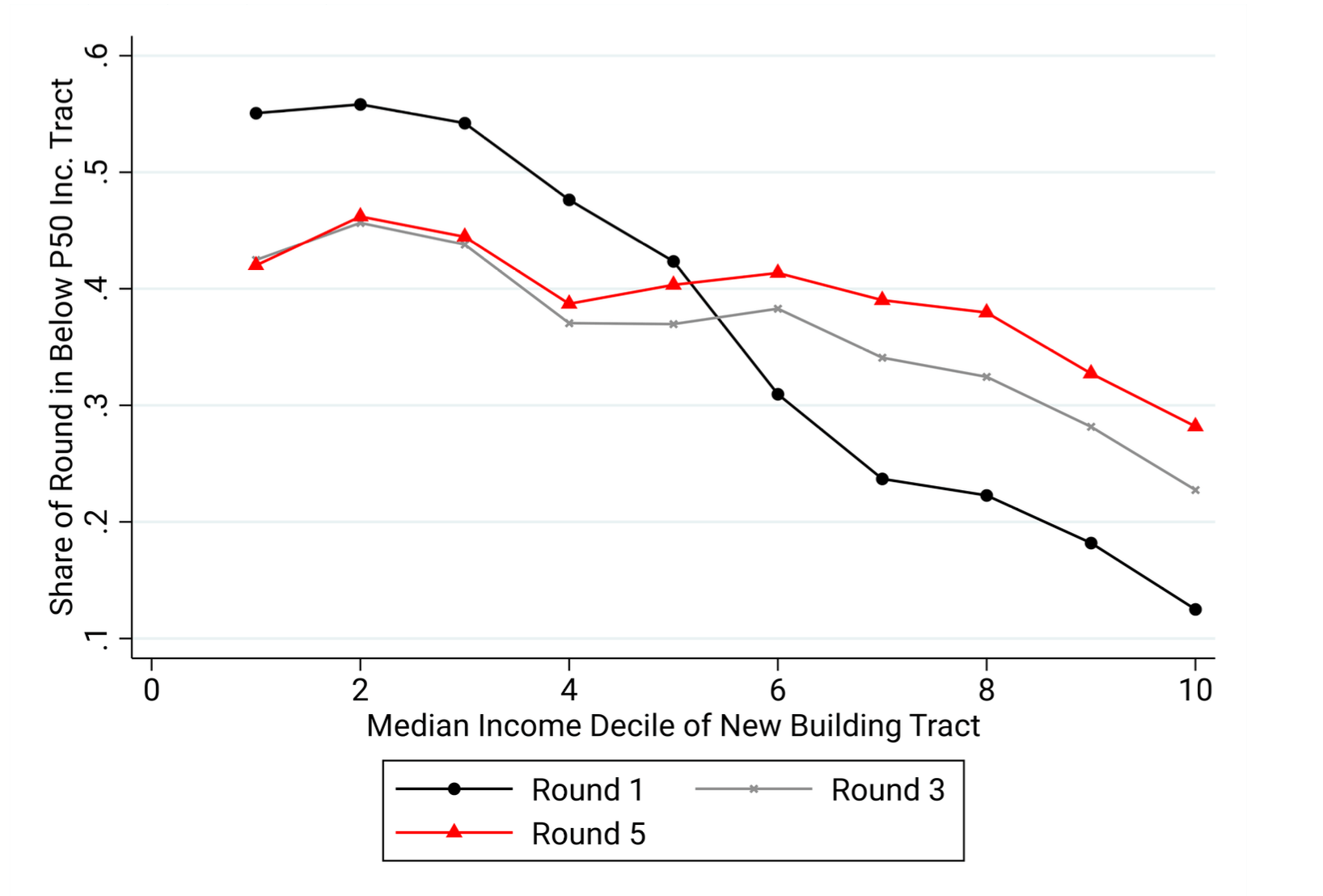
Mast 2019
clarifying questions
This law capped annual nominal rent increases to 7%
Is this rent control?
Is the data this high quality?
The dataset provides the exact street address, the month and year in which the individual lived at that particular location, the name of the individual, and some demographic information including age and gender.
This captures only a subset of owners, right?
By comparing last names in Infutor to the listed owners of the property in DataQuick, we are able to distinguish owners from renters.
Sample Construction
Is 6 years of residence on avg relatively high compared to the broader U.S. in this time period?
Why does the main sample include units built in 1900?
Can we see the age distribution of units?
Why not exclude owners?
Notes for Researchers
Since property can be owned in trusts, under a business name, or by a partner or spouse with a different last name, we expect to underclassify residents as owners.
Classifying Ownership
